Cegły refrakcyjne na sprzedaż
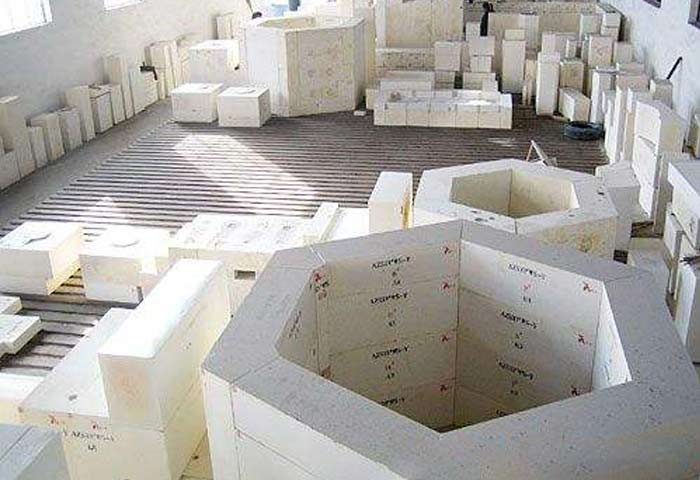
Cegła ogniotrwałą (Cegła ognia) jest opornym materiałem wykonanym z opornej na glinę lub innych refrakcyjnych surowców.
Cegły ogniotrwałe (odporne na ogień cegły) są wykorzystywane głównie jako materiały budowlane w wysokiej temperaturze i materiały konstrukcyjne do pieców budowlanych i różnych urządzeń inżynierskich termicznych.
Może wytrzymać różne zmiany fizyczne i chemiczne oraz efekty mechaniczne w wysokich temperaturach.
Zgodnie z metodą procesu przygotowania można podzielić na cegły strzelania, Nie strzelając cegły, Zwrot kondensatora (Fusion Casting Cegle), Cegła izolacyjna ogniotrwałej, itp.
O firmie PER Refractory
Predytwilna firma produkuje Wysokiej jakości cegły ogniotrwałe w tym oporne na gliniane cegły, cegły ogniotrwałe o wysokiej zawartości tlenku glinu, ogniotrwałe cegły krzemionkowe, Magnezyjne cegły ogniotrwałe, cegły mulitowe, i cegły izolacyjne, itp.
Tymczasem, Jeśli jesteś zainteresowany naszymi produktami z cegły ogniotrwałej, lub jeśli planujesz budowę pieca lub pieca do wypalania drewna, możesz się z nami skontaktować! Szybko odpowiemy fachową poradą i konkurencyjną ceną!
Trzy aspekty sprawiają, że cegły oporne na wysokie temperatury
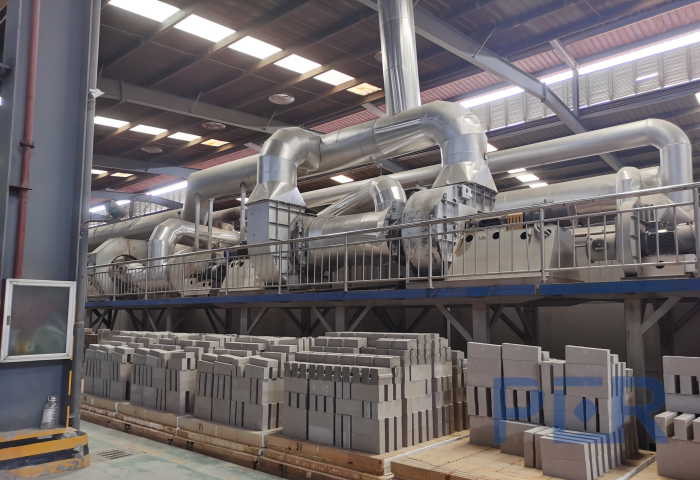
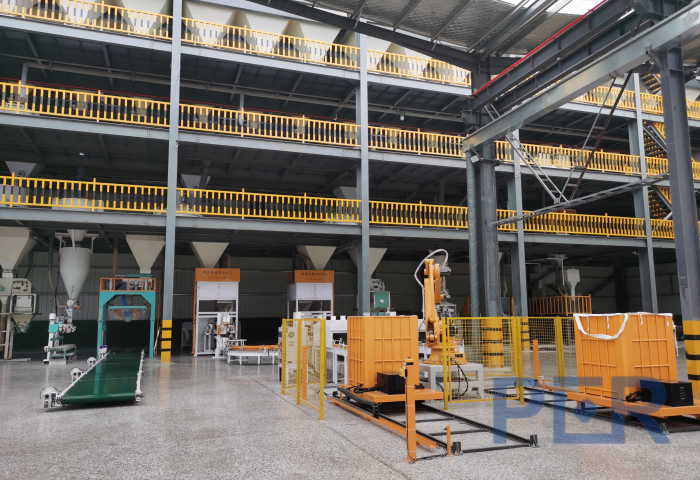
Podsumowanie lat doświadczenia produkcyjnego w firmie refrakcyjnej: Przyczyny oporności w wysokiej temperaturze cegieł oporowych.
1. Wysoka refraktory surowych minerałów używanych w opornych cegieł przeciwpożarowych.
2. Jak nieorganiczne materiały niemetaliczne z poziomu surowców określają poziom ich użycia.
3. Gotowe kęsy są poddawane wysokim temperaturom powyżej 1500 ° C w piecach tunelowych o wysokiej temperaturze, Tak więc cegły refrakcyjne mogą oprzeć się wysokim temperaturom i nadają się do podszewki pieców o wysokiej temperaturze.
Najbardziej kompletne informacje na temat rodzajów cegieł ogniotrwałej

Cegły refrakcyjne można podzielić na pięć głównych kategorii zgodnie z ich składem: Krzemionkowe cegły ogniotrwałe, cegły ogniotrwałe serii alkalicznych, Zarodne cegły zawierające węgiel, Kolonowe cegły zawierające cyrkon, oraz cegły ogniotrwałe z izolacją termiczną. Każdy piec to nie tylko jeden rodzaj refrakcyjnych cegieł i murowania, Potrzebujesz różnych cegieł ogniotrwałego, aby użyć.
1. Krzemionkowe cegły ogniotrwałe
Krzemionowo-aluminiowa cegła oporna na oporność na podstawowej teorii binarnego schematu fazowego układu binarnego AL2O3-SIO2, obejmują głównie następujące.
1.1 Cegły ogniotrwałe krzemionkowe — Odnosi się do cegły ogniotrwałej zawierającej SiO293% lub więcej i jest główną różnorodnością kwasowej cegły ogniotrwałej. Jest używany głównie do piekarników murowych, ale również używane w różnych szkłach, zestawy z, Kalcynarz węglowy, refrakcyjna cegła sklepienia, i inne obciążenie części Hot Work Mississippi Road. Ale nie nadaje się do użytku w 600 ℃ Fluktuacje temperatury w urządzeniach termicznych.
1.2 Gliniane cegły ogniotrwałe — Cegły gliniane mają głównie Mullite (25% Do 50%), faza szklana (25% Do 60%), oraz kwadratowy kwarc i kwarc (aż do 30%) składający się z. Jest używany głównie w wielkich piecach, gorące wielkie piece, piece grzewcze, Kotły mocy, Kiln wapna, piece obrotowe, ceramika, i ogniotowe piece z cegły.
1.3 Cegły ogniotrwałe o wysokiej zawartości tlenku glinu — Skład mineralny cegieł o wysokiej zawartości tlenku glinu to Corundum, mulit, i faza szklana. Jego zawartość zależy od stosunku AL2O3/ SIO2 oraz rodzaju i ilości zanieczyszczeń. Produkty z cegieł w wysokiej glinu obejmują połączone cegły obsady, Spione ziarniste cegły, niewypalane cegły, i nieokreślone cegły refrakcyjne. Cegły ogniotrwałe o wysokiej zawartości tlenku glinu są szeroko stosowane w przemyśle stalowym, Nieżelazny przemysł metalowy, i inne branże.
1.4 Corundum refraktoryczne cegły — Corundum Brick odnosi się do zawartości AL2O3 nie mniej niż 90%, corundum jako główna faza cegły refraktowej. Można go podzielić na spiekane cegły Corundum i elektroprolizowane cegły Corundum. 2.
2. Cegły ogniotrwałe serii alkalicznych
Alkaliczne cegły refrakcyjne to produkty oporne na tlenki alkaliczne (MG0 i Cao) jako główne elementy. Jego główne odmiany obejmują następujące.
2.1 Magnezyjne cegły ogniotrwałe — Cegła magnezu jest magnezytem jako surowiec o magnezycie jako główna faza krystaliczna, Treść MGO w 80% Do 85% lub więcej cegły ogniotrwałej. Jego głównymi produktami są Martin Sand, zwykły metalurgiczny piasek magnezowy, Zwykła cegła magnezu, Krzemowa cegła magnezu, Aluminiowa cegła magnezu, Cegła wapnia magnezu, Cegła węglowa magnezu, i inne odmiany. Magnesia refrakcyjna cegła jest używana głównie w płaskich piecach, konwertery tlenu, piece elektryczne, Nieżelazne wytapanie metali, itp.
2.2 Cegły dolomitowe — Cegła dolomitu jest rodzajem alkalicznej cegły opornej na dolomit jako główny surowiec. Szeroko stosowany w konwerterie alkalicznym, można również użyć do rafinacji podszewki opakowania.
2.3 Magnesia Olivine Cegły ogniotrwałe — Magnesia Olivine Cegła ogniotrwała, Czy magnezja olivine 2MGO-SIO2 jako główny składnik rodzaju opornej cegły. Stosowany głównie w płaskiej cegły komory do akumulacji, Cegła do castingu wlewków, Ogrzewany piec na dole, a piec rafinacyjny miedzi ma również dobry efekt użytkowania.
3. Zarodne cegły zawierające węgiel
Koronkowe cegły zawierające węgiel wykonane są ze związków węglowych lub węglowych. Jego główne odmiany obejmują następujące.
3.1 Zbolone cegły ogniotrwałe — Zbawna cegła oporowa, Dodanie odpowiedniej ilości środka wiążącego wykonanego z neutralnych opornych na temperatury produktów z cegły opornej. Cegły ogniotrwałe węglowe są szeroko stosowane w przemyśle elektrochemicznym, przemysł chemiczny, przemysł petrochemiczny, Przemysł galwaniczny, Ferroalloy Industrial Furnace, kwas, Podszewka zbiornika alkalicznego i rurociąg, i podszewka pieca do wytapania metali nieżelaznych (takie jak ołów, aluminium, cyna, itp.).
3.2 Grafitowe produkty ogniotrwałe — Grafitowe produkty ogniotrwałe są wykonane z naturalnego grafitu jako surowca, z gliną jako środkiem wiążącym materiały oporowe. Jednym z najczęściej wytworzonych i szeroko stosowanych jest grafitowy tygla gliniasty do produkcji stali i wytopu metali nieżelaznych.
3.3 Produkty ogniotrwałe z węglikiem krzemowym — Produkty ogniotrwałe z węglikiem krzemowym to zaawansowane materiały oporne na krzemowe węglika (Sic) jako surowiec. Ma dobrą odporność na zużycie i odporność na korozję, Lekkość w wysokiej temperaturze, Wysoka przewodność cieplna, mały liniowy współczynnik rozszerzania, i dobrą odporność na szok termiczny. W przemyśle chemicznym, jest stosowany głównie w generatorach ropy i gazu, Kalcynarze odpadów organicznych, Gazyfikatorzy ropy naftowej, i piece desulfuryzacyjne. Ponadto, w technologii kosmicznej, Może być stosowany jako dysza rakietowa i ostrze turbiny w wysokiej temperaturze, itp.
4. Kolonowe cegły zawierające cyrkon
Kolorowe cegły zawierające cyrkon należą do rodzaju kwaśnego materiału. Jest to produkt wykonany z naturalnego piasku kwarcowego (Zrsio2) jako surowiec.
Cegły ogniotrwałe z cyrkonu różnią się od krzemionkowych cegieł ogniotrwałych i serii węgla, które mają dobry odporność na żużla, i niewielka szybkość rozszerzania termicznego.
Przewodność cieplna zmniejsza się wraz ze wzrostem temperatury, wysoka temperatura mięknienia wsadu, Wysoka siła ścierania, i dobrą odporność na szok termiczny.
Teraz stał się ważnym materiałem na różnych dziedzinach przemysłowych. Wraz z opracowaniem technologii ciągłego odlewania i odgazowania w branży metalurgicznej.
Cegły ogniotrwałe cyrkon są coraz częściej używane, I istnieją głównie następujące klasyfikacje.
4.1 Cegły cyrkonowe — Cegły cyrkonowe są używane w procesie stalowym, Za pomocą metody odgazu poza stalą, i cyrkon oporowy na stopionym żużlu, Odporność na erozję stalową, i dobra odporność na szok termiczny, i odpowiedni do pracy pod zmniejszonym ciśnieniem. Zarodne cegły cyrkonowe mają wysoką odporność na kwaśną żużę i szkło, a zatem są również szeroko stosowane w poważnie uszkodzonych częściach pieców szklanych, w których topi się najbardziej aktywne szkło. Ogony cyrkonowe mają również właściwość nie jest penetrowana przez metalowe glin, tlenki aluminium, i ich żużla, i w ten sposób uzyskały dobre wyniki w dnach pieca rafinacji aluminium.
4.2 AZS Electriced Cegle — AZS Electriced Cegle, Znany również jako cegła z cyrkonu z elektroproczoną cyrkonią, Wraz z rozwojem przemysłu szklanego, AZS Electriced Cegle stał się kluczową częścią szklanego pieca musi refrakcjonować materiały. Jest bardziej odporny na erozję szklanej cieczy.
4.3 Cegły elektrozmarania cyrkonu — Cegła elektrozmarania cyrkonu, Ten rodzaj cegły charakteryzuje się gęstą strukturą krystaliczną, wysoka temperatura mięknienia wsadu, i dobra odporność na szok termiczny. O wysokiej wytrzymałości mechanicznej w temperaturze pokojowej i wysokiej temperaturze, dobra odporność na zużycie, Dobra przewodność cieplna, i doskonała odporność na zdolność erozji żużli. Użycie tego rodzaju produktu jest szerokie, stosowane w metalurgicznych piecach grzewczych, nawet piece cieplne, Gniazdki pieca z węglikiem wapniowym, Szklane ściany pieców, itp., użycie bardzo dobrych wyników.
5. Oszał na ciepło cegły refrakcyjne
Oszał na ciepło cegły refrakcyjne. Jest to materiał oporowy o wysokiej porowatości, niska gęstość nasypowa, i niską przewodność cieplną. Refraktory inspulacji ciepła nazywane są również światłami. Obejmuje następujące klasyfikacje.
5.1 Izolacja termiczna wysokiej glinu lekkie cegły oporne — Izolacja termiczna wysokiej glinu lekka cegła ogniotrwała to lekka cegła o izolacji termicznej z boksytem jako główna zawartość Al2O3 nie mniejsza niż 48%. Lekkie cegły oporowe o wysokiej zawartości glinu mogą być stosowane do warstwy izolacji cieplnej murowej i bez intensywnej wysokiej temperatury erozji stopionego materiału i szorowania części części. W bezpośrednim kontakcie z płomieniem, Temperatura kontaktu powierzchniowego ogólnych cegieł ogniotrwałej o wysokiej izolacji tlenku glinu nie powinna być wyższa niż 1350 ℃. Mulite Izolacja termiczna refrakcyjne cegły mogą być w bezpośrednim kontakcie z płomieniem i mieć charakterystykę oporności w wysokiej temperaturze, wysoka wytrzymałość, i niezwykły efekt oszczędzania energii. Nadaje się do podszewki pieców pirolizy, piece na gorące powietrze, Ceramiczne piece rolki, elektryczne piece szuflady porcelanowe, i różne piece oporowe.
5.2 Gliniane izolacja termiczna lekkie cegły oporne — gliniana izolacja termiczna lekka cegła oporowa 30% ~ 48% Izolacja termiczna cegła oporowa. Jego proces produkcyjny przyjmuje metodę wypalenia plus metodę postaci i metodę pianki. Glina ogniotrwała, Drift Peads, i oporna na gliny klinkier jako surowce, zmieszane z środkiem wiążącym i trociny, po dozowaniu, mieszanie, odlewanie, wysuszenie, i strzelanie, Aby wytworzyć gęstość luzem 0. 3 ~ 1. 5Produkty G/CM3. Produkcja glinianych cegieł z izolacją termiczną stanowi ponad połowę całkowitej produkcji cegieł ogniotrwałej izolacji termicznej.
5.3 Izolacja termiczna Ziemi okrzemek Lekkie cegły oporowe — Izolacja termiczna Ziemi okrzemkowej lekka cegła ogniotrwałe jest relacją termiczną refrakcyjną produktem wykonanym z Ziemi okrzemkowej jako główny surowiec. Jest stosowany głównie w warstwie izolacji cieplnej poniżej 900 ℃.
5.4 Dryfowe cegły—Drift Bead Brick, jest inkulującym ciepłem produktem ogniotrwałym wykonanym z koralików dryfowych jako głównego surowca. Koraliki dryfowe to puste kulki ze szkła aluminianowego unoszące się z popiołu lotnego elektrowni termicznych. To jest światło, cienkościenne, dziurawy, gładka powierzchnia, Odporność na wysoką temperaturę, i ma dobrą wydajność izolacji cieplnej. Stosując te doskonałe cechy koralików dryfowych, Możemy wykonać lekką izolację termiczną o doskonałej wydajności konserwacji ciepła. Produkcja cegły z koralikami dryfowymi może być formowanie półpływające.
Wydajność opornych cegieł
Kredytna cegła przeciwpożarowa jest nieorganicznym materiałem niemetalicznym z refraktorami nie mniejszą niż 1580 ℃, który jest podstawowym materiałem do obsługi technologii wysokiej temperatury.
Jest to materiał strukturalny dla pieców murowych i innych urządzeń termicznych.
Jest to również materiał funkcjonalny do produkcji niektórych pojemników i części o wysokiej temperaturze lub odgrywania specjalnej roli.
Cegły refrakcyjne muszą mieć dobrą strukturę organizacyjną, właściwości termiczne, właściwości mechaniczne, i używaj właściwości do pomyślnego użycia pod działaniem wysokiej temperatury.
To jest, Istnieje wysoki stopień refrakcji, Temperatura zmiękczania obciążenia, odporność na szok termiczny, oraz odporność na erozję chemiczną i inne właściwości.
W ten sposób, może wytrzymać skutki różnych zmian fizycznych i chemicznych oraz spełniać wymagania dotyczące wykorzystania urządzeń termicznych i komponentów.
O firmie PER materiałów ogniotrwałych
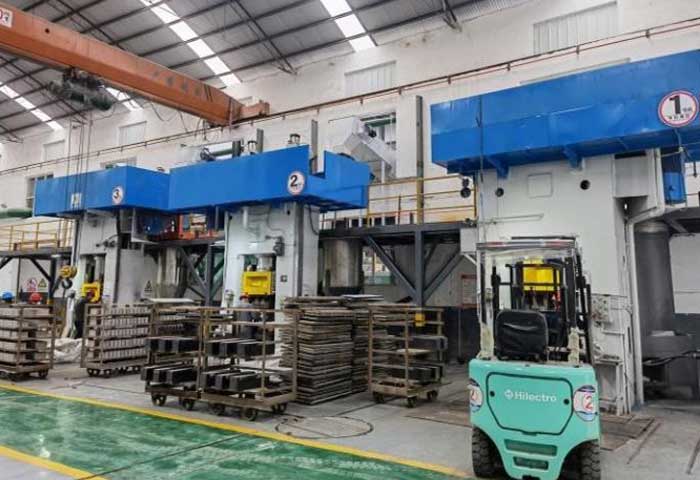
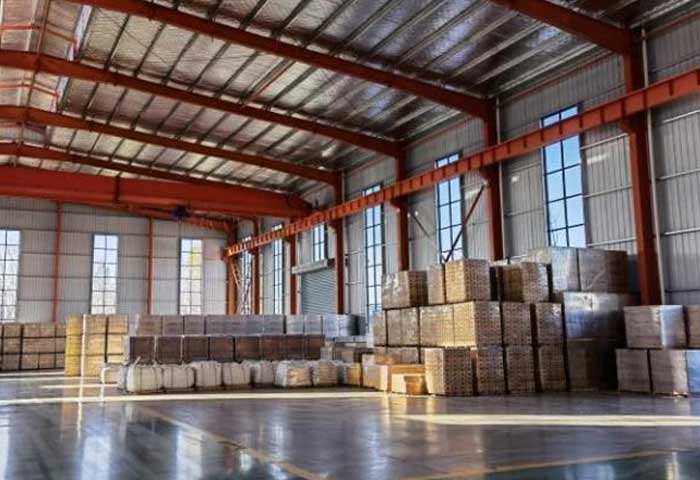
Firma materiałów ogniotrwałych PER znajduje się w mieście Xinmi, Prowincja Henan, rodzinne miasto materiałów ogniotrwałych w Chinach. Nasza firma jest opartym na technologii przedsiębiorstwem zajmującym się materiałami ogniotrwałymi, integrującym R&D, produkcja, obroty, i serwis techniczny. Bogate zasoby i doskonała jakość na tym terytorium zapewniają niezrównane, doskonałe warunki do produkcji materiałów ogniotrwałych. Naszymi głównymi produktami są cegły ogniotrwałe, cegły ogniotrwałe o wysokiej zawartości tlenku glinu, ogniotrwałe cegły krzemionkowe, cegły ogniotrwałe magnezowe, cegły mulitowe, cegły izolacyjne, i inne produkty odporne na wysokie temperatury.
Firma PER materiał ogniotrwały jest bazą produkcyjną surowca zielonego, oszczędzanie energii, i przyjazne dla środowiska nowe materiały ogniotrwałe. Nasza firma przeszła ISO9001:2008 międzynarodowy certyfikat systemu jakości i GB/T24001-2004 / ISO14001:2004 certyfikacja systemu zarządzania środowiskowego, certyfikacja agencji kontroli jakości w przedsiębiorstwie. Nasze produkty są dobrze sprzedawane w ponad 20 krajów na całym świecie. Są to preferowane produkty ogniotrwałe w metalurgii, nieżelazne, petrochemiczny, szkło, ceramika, i inne przemysł ogniotrwały.
